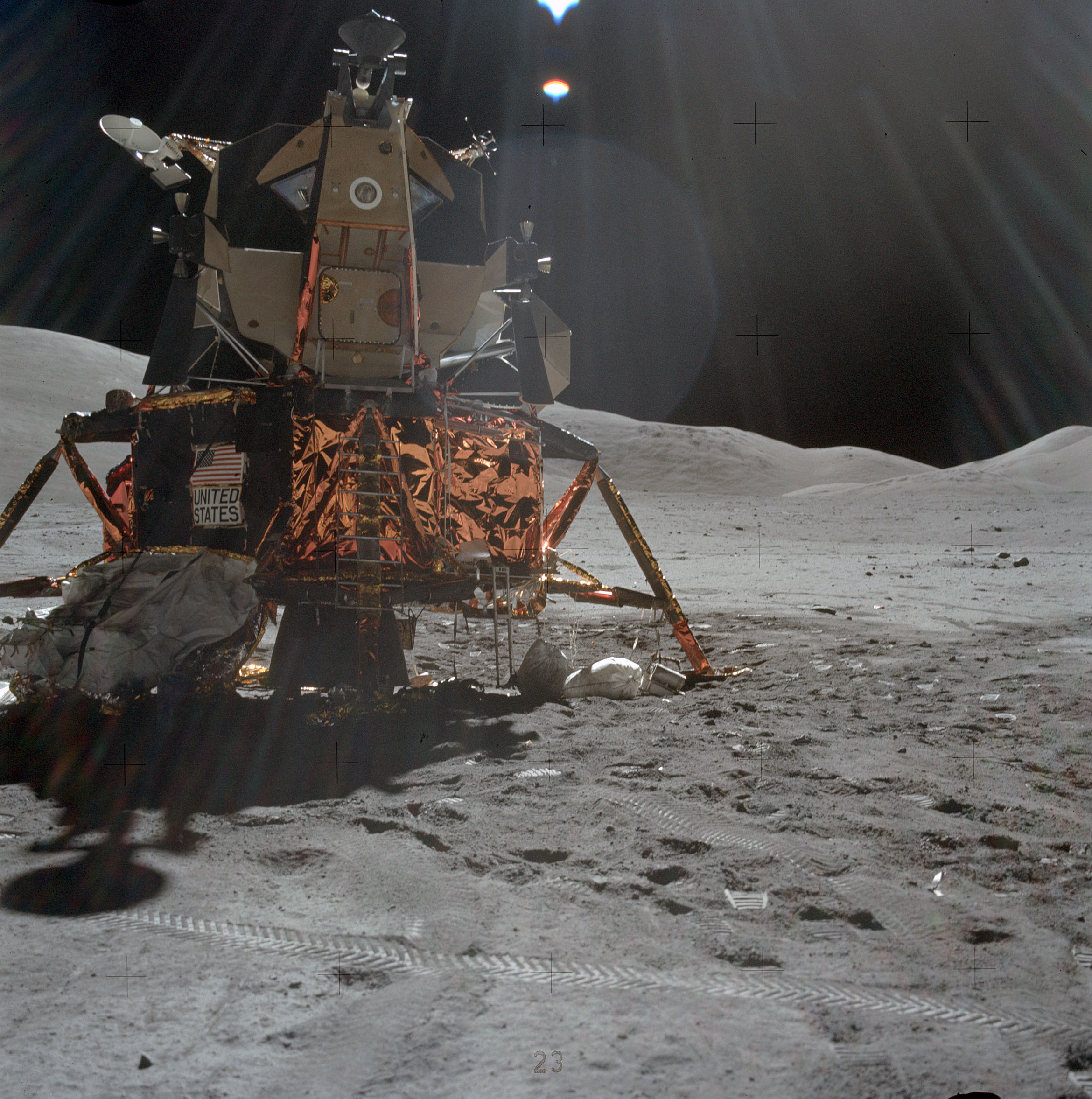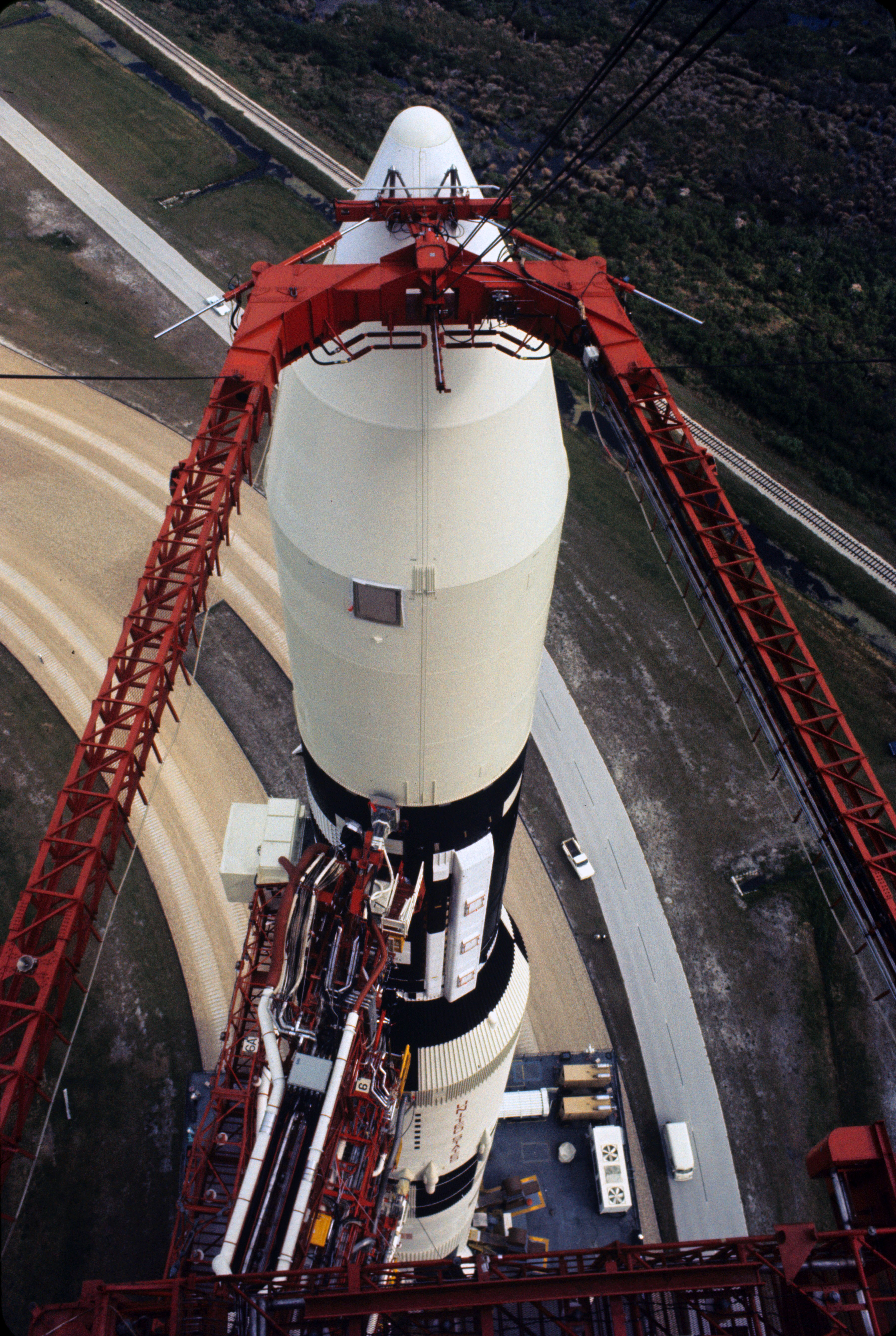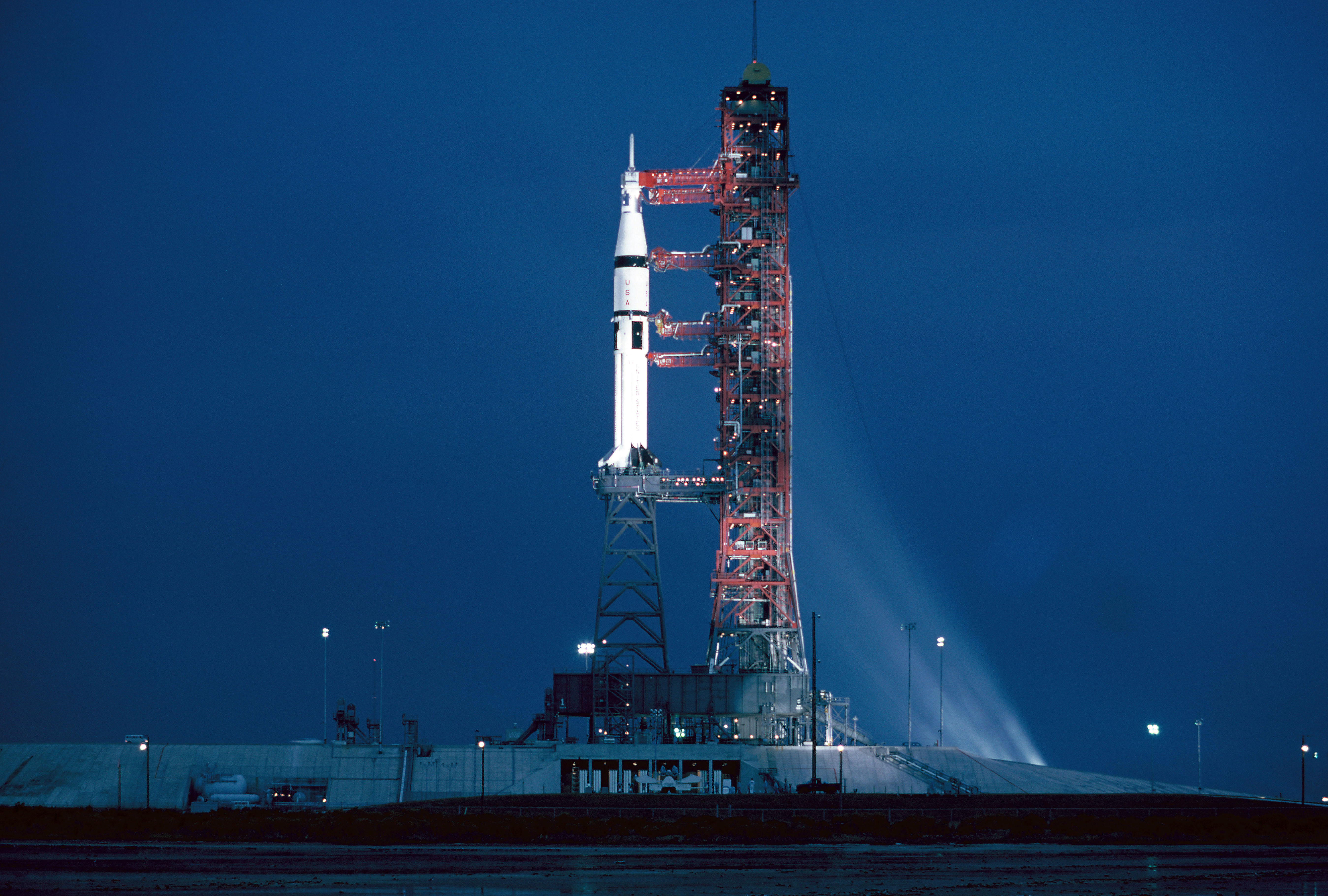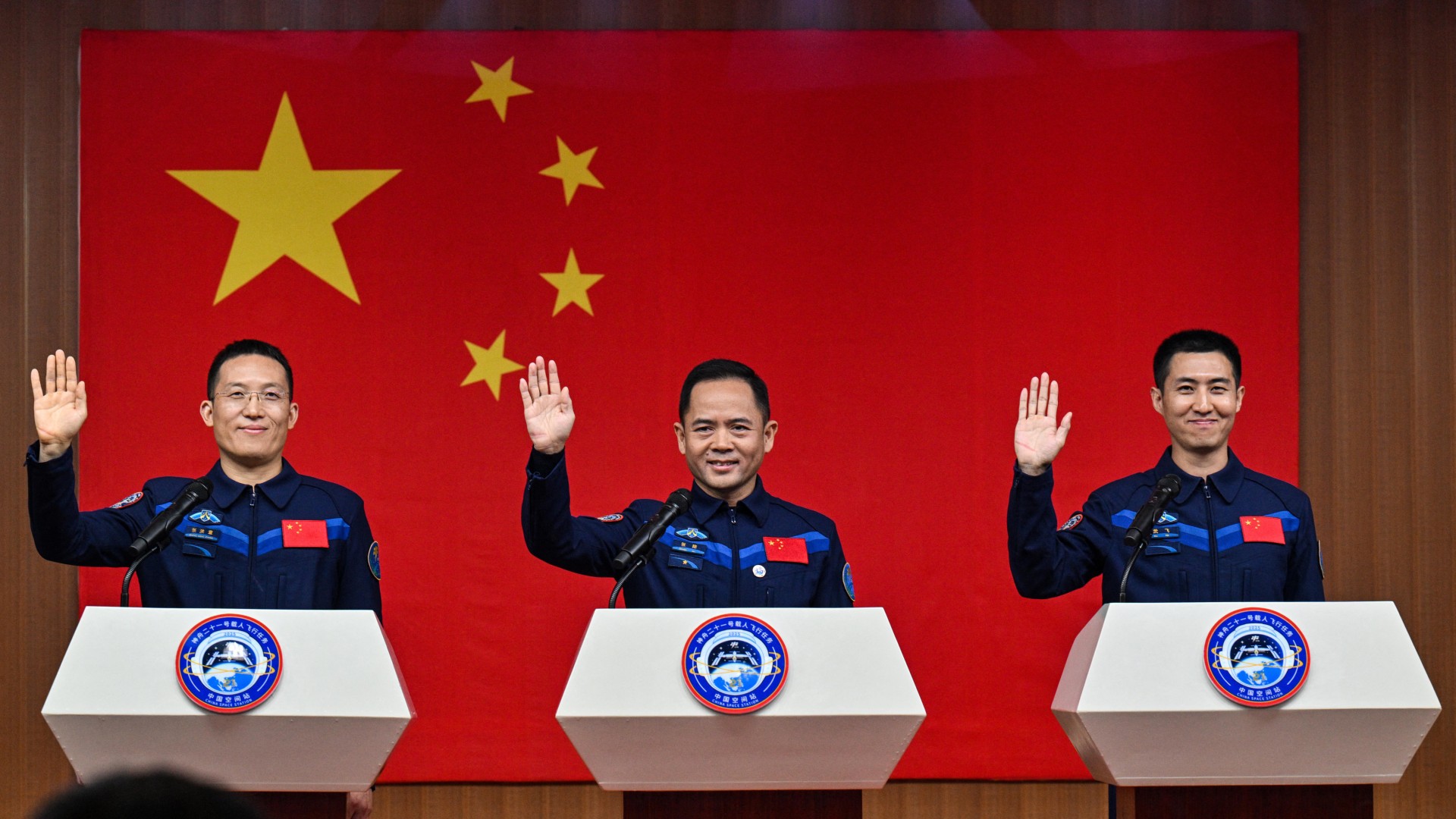Moonshots and Snapshots of Project Apollo
Apollo 17 Lunar Module Challenger’s Descent Stage
Much of the Apollo 17 Lunar Module Challenger’s descent stage is covered with gold Mylar thermal blankets, which were hand-crinkled to minimize the heat transfer between layers. At left, a white blanket protects the Modularized Equipment Stowage Assembly (MESA) pallet, containing lunar surface tools, sample containers, and film and TV cameras. Rover tracks can be seen in this photo, taken on December 11, 1972.
View from the Launch Umbilical Tower
View from the Launch Umbilical Tower (LUT) of the fifty-six-foot-tall payload shroud, during the Skylab 1 rollout on April 16, 1973. The damper arms extending to the shroud mitigated movement caused by winds. The swing arms and umbilical connections to the Orbital Workshop (OWS) and second stage are below. The uppermost swing arm, which had been used to access the Apollo command modules (CM) for manned launches, was removed for this launch.
Xenon Floodlights Illuminate the Skylab 3 Saturn IB
Xenon floodlights illuminate the twenty-two-story-tall Skylab 3 Saturn IB and Launch Umbilical Tower (LUT) at Pad 39B at dusk on July 27, 1973. This angle looks west. Within hours, the launch vehicle would be fueled for the second time in eight days; the first, on July 20, was part of the combined countdown and countdown demonstration test (CDDT). The Holloway Corporation of Titusville, Florida, built the “milkstool” pedestal.
Breaking space news, the latest updates on rocket launches, skywatching events and more!
Join our Space Forums to keep talking space on the latest missions, night sky and more! And if you have a news tip, correction or comment, let us know at: community@space.com.

Space.com is the premier source of space exploration, innovation and astronomy news, chronicling (and celebrating) humanity's ongoing expansion across the final frontier. Originally founded in 1999, Space.com is, and always has been, the passion of writers and editors who are space fans and also trained journalists. Our current news team consists of Editor-in-Chief Tariq Malik; Editor Hanneke Weitering, Senior Space Writer Mike Wall; Senior Writer Meghan Bartels; Senior Writer Chelsea Gohd, Senior Writer Tereza Pultarova and Staff Writer Alexander Cox, focusing on e-commerce. Senior Producer Steve Spaleta oversees our space videos, with Diana Whitcroft as our Social Media Editor.



